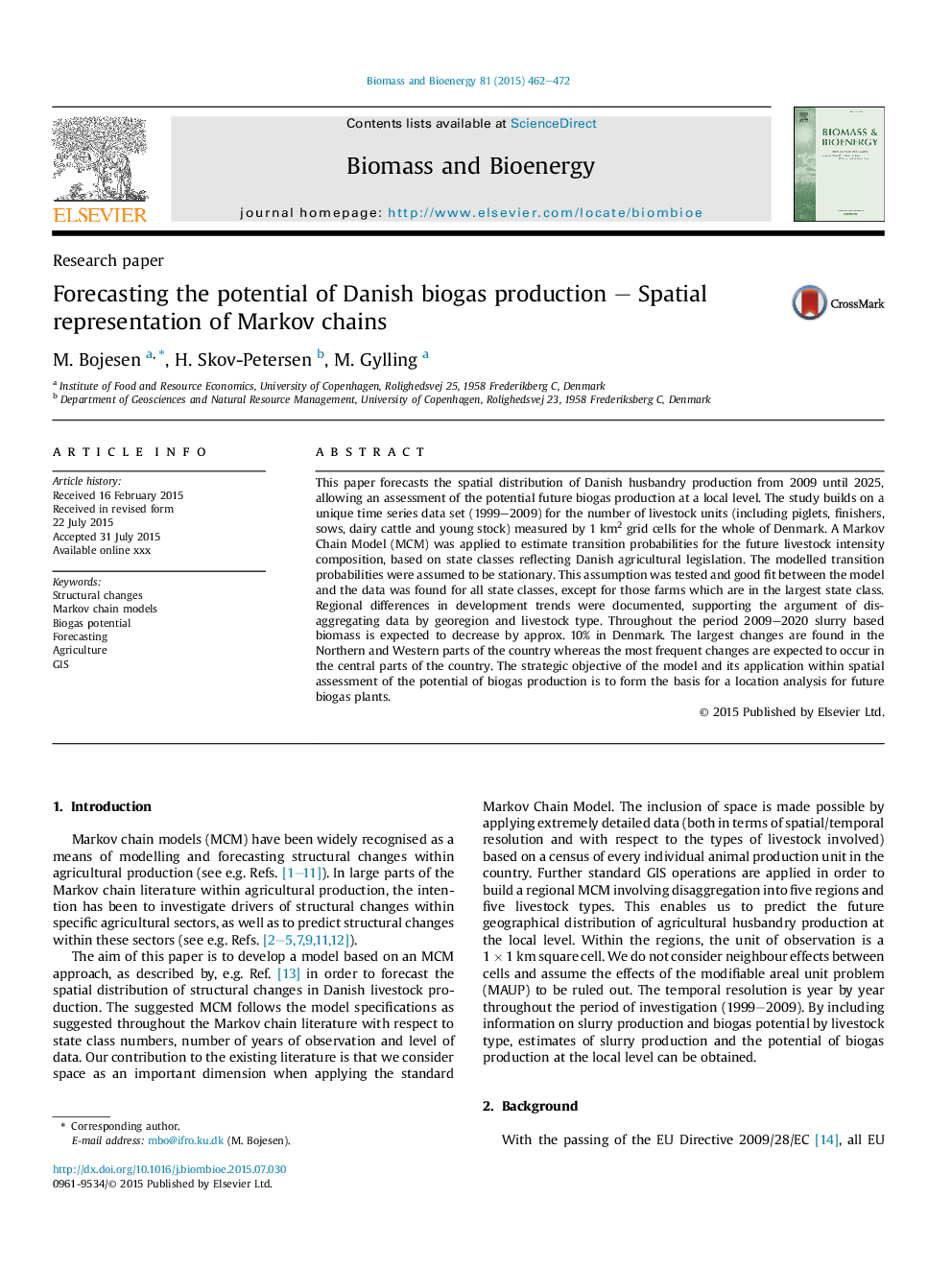| Article ID | Journal | Published Year | Pages | File Type |
|---|---|---|---|---|
| 7063859 | Biomass and Bioenergy | 2015 | 11 Pages |
Abstract
This paper forecasts the spatial distribution of Danish husbandry production from 2009 until 2025, allowing an assessment of the potential future biogas production at a local level. The study builds on a unique time series data set (1999-2009) for the number of livestock units (including piglets, finishers, sows, dairy cattle and young stock) measured by 1Â km2 grid cells for the whole of Denmark. A Markov Chain Model (MCM) was applied to estimate transition probabilities for the future livestock intensity composition, based on state classes reflecting Danish agricultural legislation. The modelled transition probabilities were assumed to be stationary. This assumption was tested and good fit between the model and the data was found for all state classes, except for those farms which are in the largest state class. Regional differences in development trends were documented, supporting the argument of disaggregating data by georegion and livestock type. Throughout the period 2009-2020 slurry based biomass is expected to decrease by approx. 10% in Denmark. The largest changes are found in the Northern and Western parts of the country whereas the most frequent changes are expected to occur in the central parts of the country. The strategic objective of the model and its application within spatial assessment of the potential of biogas production is to form the basis for a location analysis for future biogas plants.
Related Topics
Physical Sciences and Engineering
Chemical Engineering
Process Chemistry and Technology
Authors
M. Bojesen, H. Skov-Petersen, M. Gylling,
